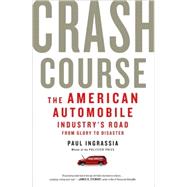
Note: Supplemental materials are not guaranteed with Rental or Used book purchases.
Purchase Benefits
What is included with this book?
| Timeline | p. viii |
| Where the Weak Are Killed and Eaten | p. 3 |
| Dynasty and Destiny | p. 14 |
| Glory Days of Ponies and Goats | p. 30 |
| Crummy Cars and CAFE Society | p. 45 |
| Honda Comes to the Cornfields | p. 63 |
| Repentance, Rebirth, and Relapse | p. 78 |
| "Car Jesus" and the Rise of the SUV | p. 99 |
| Potholes and Missed Opportunities | p. 116 |
| From Riches to Rags | p. 136 |
| The Hurricane That Hit Detroit | p. 161 |
| Chapter 11? | p. 191 |
| As Precipice Approaches | p. 216 |
| Bailouts, Bankruptcies, and Beyond | p. 244 |
| Afterword: Another Chance | p. 275 |
| Acknowledgments | p. 281 |
| Notes | p. 283 |
| Index | p. 293 |
| Table of Contents provided by Ingram. All Rights Reserved. |
The New copy of this book will include any supplemental materials advertised. Please check the title of the book to determine if it should include any access cards, study guides, lab manuals, CDs, etc.
The Used, Rental and eBook copies of this book are not guaranteed to include any supplemental materials. Typically, only the book itself is included. This is true even if the title states it includes any access cards, study guides, lab manuals, CDs, etc.
Excerpted from Crash Course: The American Automobile Industry's Road from Glory to Disaster by Paul Ingrassia
All rights reserved by the original copyright owners. Excerpts are provided for display purposes only and may not be reproduced, reprinted or distributed without the written permission of the publisher.